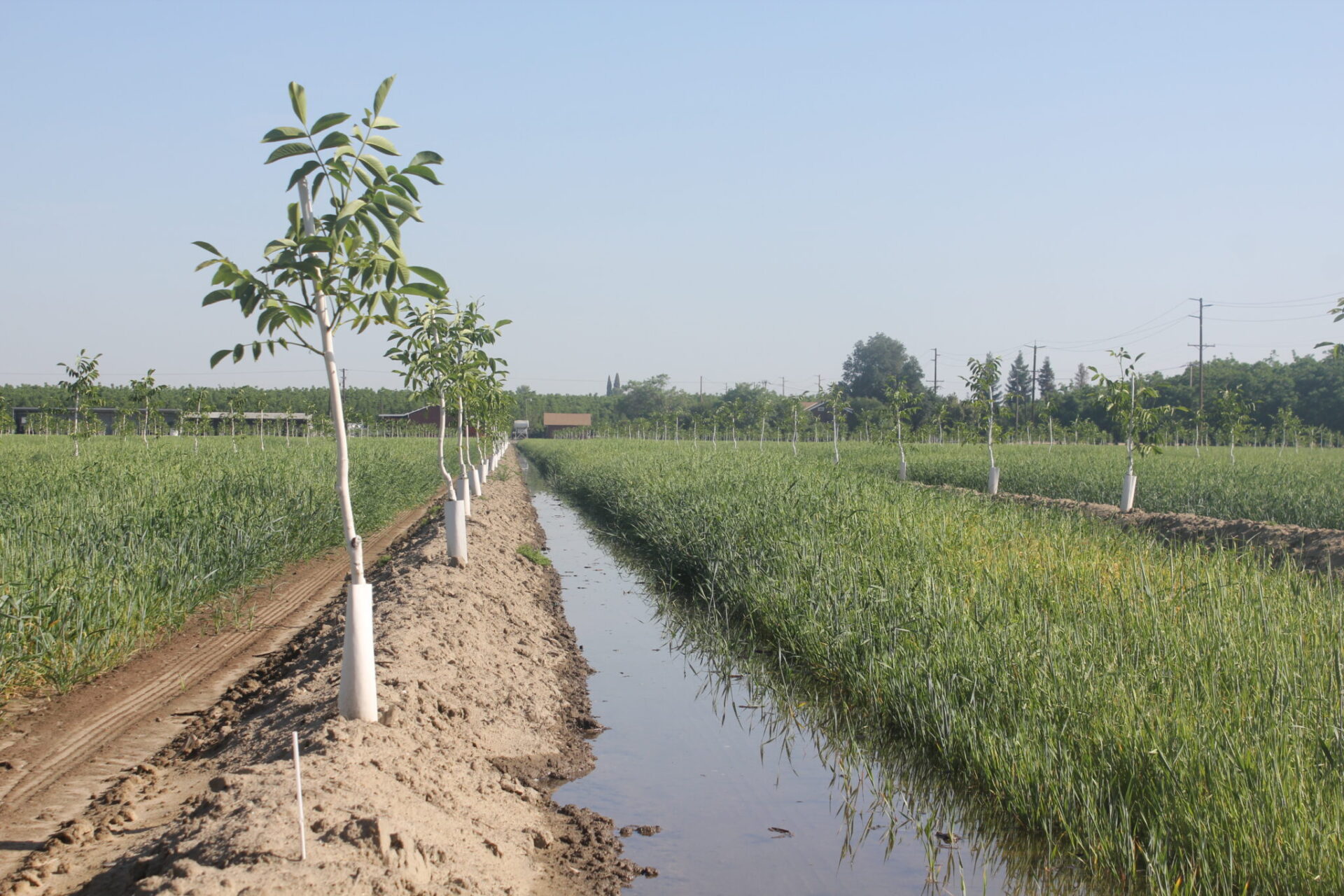If no significant rain events are in the picture this fall, should growers think about filling the soil profile in their orchards?
One hundred percent, Ultra Gro crop advisor Rich Kreps emphasized.
Filling the soil profile before winter rains pushes salts in the soil below the root zone, Kreps explained. When rainfall does occur, it can further dilute accumulated salts in the soil. Rainfall on dry orchard soils can move salts from the centers of the rows and salt rings, back into the active root zone.
It is not enough to just turn on the irrigation system to put water on the ground.
“You have to put a shovel in the ground to know where the water is going and how long it takes to fill the profile,” Kreps said.
Standing water after an irrigation can indicate soil compaction and an amendment may be needed to open the soil and allow water to move into the root zone. In the immediate term, it indicates that the irrigation run time needs to be shortened, to keep pace with the soil’s infiltration rate.
UCCE orchards advisor Luke Milliron said starting the growing season with a full soil profile is a good goal. That allows for delay of irrigation in the spring when late rains can cause flooding and anaerobic soil conditions in orchards.
Sac Valley Orchards notes that evapotranspiration rates are low during the winter dormant season, presenting a good opportunity to refill the soil profile. Advantages to this practice include warming the soil to reduce risk of tree damage in a severe frost, ability to delay first irrigation and provide soil moisture at a time when root oxygen deprivation and disease risk is less of a concern. In heavier soils, banking water for use later in the season can lessen summer pumping.
It is possible to substitute irrigation for a rainfall shortage by tracking rainfall on a monthly basis beginning in December. Again, check soil moisture, either with sensors or by hand with a shovel/auger, to determine if rainfall and/or irrigation is filling the soil profile throughout the root zone.
UCCE advisors note that not all rainfall is effectively stored in the soil profile. On average, only 50-60 percent of actual rainfall will be held in the soil profile.
As always, using site-specific rain gauges rather than depending upon regional weather stations some distance away will improve accuracy in assessing your specific situation. Soil moisture sensors or ground-truthing with an auger will give you the best indication of how much the soil-profile has refilled. Checking soil moisture by hand is a very basic method that allows you to evaluate storage of rainfall and winter irrigation in different orchard soils.













